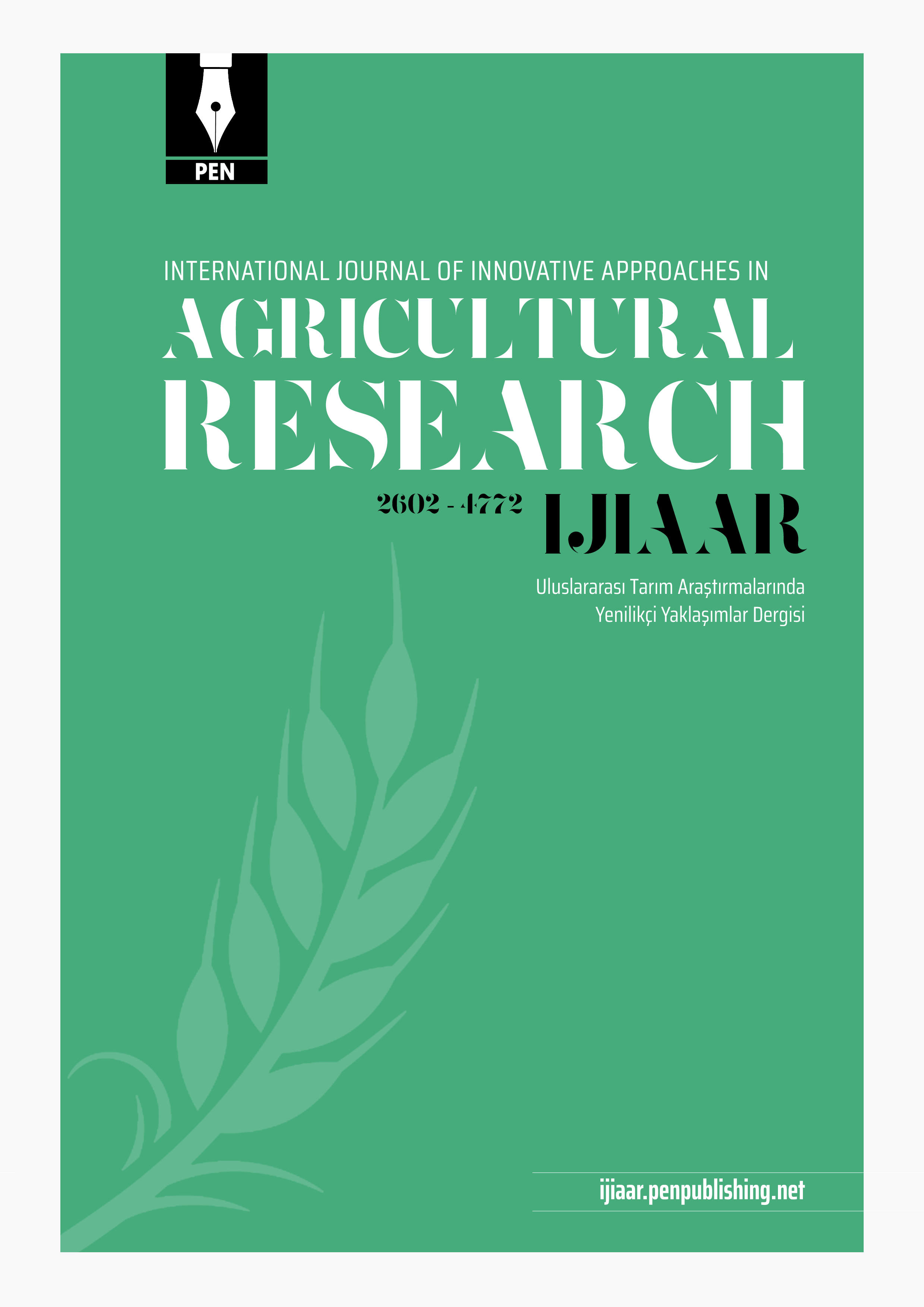
Uluslararası Tarım Araştırmalarında Yenilikçi Yaklaşımlar Dergisi
Yazarlar: Valentin Kosev, Viliana Vasileva , Yalçın Kaya
Konular:-
DOI:10.29329/ijiaar.2019.188.7
Anahtar Kelimeler:Adaptation,Lupinus albus,Genotype,Environment
Özet: Ecological stability of quantitative signs in white lupine varieties was studied in field trial in the Institute of Forage Crops, Pleven, Bulgaria. Seven varieties of white lupine were used. Analysis of variance showed a well-proven influence of genotype and environment factors and the interaction between them in terms of plant height, number of pods, number of seeds and seeds weight. For plant height, number of seeds and seeds weight, the influence of the environment was stronger than that of the other two factors. The seeds weight strongly correlated with the Anicchiarico Wi indices (r = 0.87), bi (r = 0.634), ai (r = 0.633) and T (r = 0.559) and negative correlated with the Lin and Binns (r = -0.977) parameter. Ecological stability parameters for plant height showed the most stable and high-growing PI533704 variety; for the number of pods, number of seeds and seeds weight Zuter variety, respectively. Zuter variety was found close to the ideal type combining high productivity with ecological stability. Lucky801, for most signs, was environmentally unstable but highly productive and is therefore suitable as a parent component in breeding programs for obtaining high yield varieties.